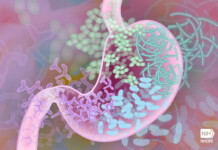Whether it’s at work or out on a group ride, when people learn that I am a Dietitian/Nutritionist, the most common question I get is “what do you think of the (………) diet?” Insert any diet into that blank, because I could plug my ears and sing “la la la la la” and my answer will be the same: For optimal nutrition, a balance diet is the key. Taking anything to an extreme lends itself to creating a deficiency somewhere else. Our bodies need many different macro- and micro-nutrents that work together to make our tissues, hormones, physiological sytems, etc. function properly together (as discussed in the nutrition articles in the March and April 2014 issues of Cycling Utah available online). The importance of balance in our food patterns applies to athletes especially, as our nutrition directly affects our performance on the bike.
So, after I shut down whatever 4-letter D-word (diet) is being asked about, the rebuttal is usually, “but my friend/spouse/teammate did it and lost, like, 10 lbs in 2 weeks! It must be good right?” To which I acknowledge that may be the case, but everyBODY is different. What works for some may be totally different for another depending on age, gender, fitness level etc. A quick body change is likely in response to the drastic food change, and odds are that it won’t last long anyway. Many of us know the post-diet rebounds of gaining it all back, fluctiations of energy levels, or going back to our body’s “normal” appeareance. The ultimate goal should be a lifestyle change, consistent healthy habits, not a quick fix style diet!
The term “fad diet” refers to idiosyncratic eating patterns that promote short-term weight loss, usually with no concern for long-term weight maintenance, but they enjoy temporary popularity in the media or at your local gym. Let’s look at a few of the most popular right now, and discuss the relevance and nutritional affects.
Gluten-Free Diet
Going “GF” is one of the most popular diet trends right now, because many are adopting a gluten-free diet to lose weight. All foods containing wheat, barley and rye (such as pasta and traditional baked goods) are avoided, while whole foods like fruits, vegetables, beans, lentils, dairy, healthy fats and seeds are promoted. You don’t necessarily need to have celiac disease or gluten-sensitivity to embark on this diet. Many athletes benefit from gluten free foods because carbohydrates sources such as rice and potatoes are easier to digest than the heavier wheat products. The weight loss that may come with the “GF” diet tends to come from the fact that there is less caloric intake from avoiding many foods, as gluten is in many carb-rich foods, and it is the binding protein in most baked goods and treats. There is also tendency to steer clear of packaged and processed foods, which tend to be high in sodium and preservatives. A wide variety of gluten-free packaged foods are now available, but many are loaded with more sugar and fat than their gluten-filled counterparts. This makes it easy to splurge, even on gluten-free foods. Large portions of any foods (such as gluten-free breads or potato chips) can lead to weight gain. Overall, choosing to eat low to no gluten containing foods may lead to desired body changes, just be mindful that avoiding gluten-containing whole grains can decrease the spectrum of nutrients taken in, such as B vitamins, so be sure to get them from other foods or supplements if you choose to go “GF.”
Intermittent Fasting
The theory behind it is that our bodies were programmed for periods of feast and famine. As such, we should recreate these feast and famine days in order to lose weight and live a longer life. On this plan (also called The Fast Diet), dieters select two non-consecutive days each week to eat 500 or 600 calories, depending if they’re a man or woman. Dieters are recommended to follow their regular exercise regimen during fasting days. During the remaining five non-fasting days, you can eat whatever you wish. There are some pros to this diet, such as all food groups are allowed, and exercise is promoted. But much of the scientific evidence regarding intermittent fasting is controversial. With suboptimal calories consumed twice a week, you may become deficient in several important nutrients. Eating so few calories can result in uncomfortable side effects such as headaches, irritability and hunger. When it comes to cycling training or racing, these can be detrimental and even dangerous.
Paleo Diet
Ranking dead last on U.S. News’s Best Diets Overall rankings list, the caveman-inspired diet still has a strong following. It revolves around eating like our Paleolithic ancestors – who lived by hunting and gathering. Creators claim that by following this plan, you can increase athletic performance, become naturally lean and even eliminate acne. The Paleo diet encourages fruits and vegetables, seafood, meat, and healthy fats (such as olive oil and flax seed). These all seem great right? Well, keep in mind that we are not hunters and gatherers. We have access to food all the time, so don’t need to stock up on meat and fat in case we don’t get food for days upon days like our ancestors. Also, sugars, grains, salt-processed foods, yeast, dairy, and whole grains are all discouraged foods. When entire food groups are eliminated, you may not get essential nutrients, including calcium and vitamin D. Cyclists and other endurance athletes need salt and carbohydrates more than the average person, so if those are restricted, it can affect performance and long term health. So again, thought the short-term results may be good, consider your lifestyle and overall nutrition.
Raw Food Diet
The raw food movement has been around for years, but folks are now turning to it in order to lose weight. On this plan, food is never cooked above 116 degrees Fahrenheit in order to keep the food’s enzymes intact. Raw foodists emphasize fresh fruits and vegetables, nuts, seeds, herbs, and miso. Off-limits choices include bread, beans, lentils, pasta, meat and eggs. Some followers choose to consume unpasteurized milk and cheese, along with raw fish and meat. Pros of this diet include lots of fresh fruits and vegetables, and healthy fats from nuts and seeds. Some cons include tedious meal preparation and special equipment which can be costly. Also, consuming unpasteurized dairy foods and uncooked fish and meat can lead to foodborne illnesses such as Listeria and E. coli. And again, eliminating numerous food groups (including grains, legumes and animal products) over long periods of time can lead to vitamin deficiencies.
Mediterranean Diet
With its emphasis on fruits and vegetables, olive oil, fish, and other healthy fare, the Mediterranean diet is eminently sensible. And experts’ assessments of it were resoundingly positive, giving this diet an edge over many competitors.
Flexitarian Diet
The Flexitarian diet, which emphasizes fruits, veggies, whole grains, and plant-based protein, is a smart and healthy choice. It outperformed many of its competitors, with particularly high scores in nutritional completeness, easiness to follow, and long-term weight loss.
Low-Carb/Low Fat/High Protein diets
A few popular diets that seem to stick around include Atkins, South Beach, and the Zone. They are used often because many get results from the initial weight loss that comes with cutting down carbs. This makes sense because the body will utilize stored fat and glycogen for energy, thus resulting in weight loss. The problems arise from excess protein intake, as it is used as the food to replace what is taken away from carbs. When protein comes from animal products (meat, cheese, eggs), cholesterol levels will go up. Also, the lack of fruits and starchy vegetables can further problems such as dehydration and vitamin deficiencies. Any diet that eliminates or severely restricts entire food groups, especially the critical macronutrient carbohydrate, leads to cascades of deficiencies and hormonal imbalances. Even if you take a multivitamin, you’ll still miss some critical nutrients.
Liquid Diets and Cleanses
Juicing and other methods of all liquid diets are often used for weight loss or to cleanse the digestive system. One example is the “Master Cleanse” (lemon juice, maple syrup, and cayenne pepper). While the idea to give digestion a rest and get lots of vitamins form fruits and vegetables sounds healthy, it is again a very short-term method. When you only get juice, you don’t get fiber, which is essential for digestive health and for lowering your risk of diabetes and heart disease. Juices are also very high in sugar. To get a cup of apple juice takes about 4 apples, which can have up to 90g of sugar, and that’s without the fiber which would help absorb the sugar! I’d rather eat one apple 
Summary
Balance and moderation are the keys to successful eating habits and a healthy lifestyle. When dieting, slow and steady adaptations are more likely to last than dramatic weight changes. This is especially important for athletes because if you lose weight too quickly, you can lose muscle, bone and water. You also will be more likely to regain the pounds afterwards. So get out of that vicious cycle! Also, it is boring to eat the same thing over and over and hard to stick with monotonous plans. Limiting food choices or following rigid meal plans can be an overwhelming, distasteful task, and can lead to disappointment f you don’t see the results you expected. Life is already complicated enough! So, though it may seem simple or redundant, remember the basics of nutrition: eat lots of fresh and colorful foods, while limiting intake of processed foods and foods high in fat and sugar. With that and a healthy lifestyle, you’re already on the right track. If you do decide to try any new diet, always ask yourself: “Can I eat this way for the rest of my life?” If the answer is no, it’s not for you.
Breanne Nalder, MS, RDN has a Master’s degree in nutrition with an emphasis in sports dietetics at the University of Utah. She is a Registered Dietitian Nutritionist, certified ACE (American Council on Exercise) fitness instructor, and races for DNA Cycling p/b K4 Racing as a category 1 road cyclist. For personal nutrition coaching, you can reach Breanne at 801-550-0434 or breanne@plan7coaching.com.







